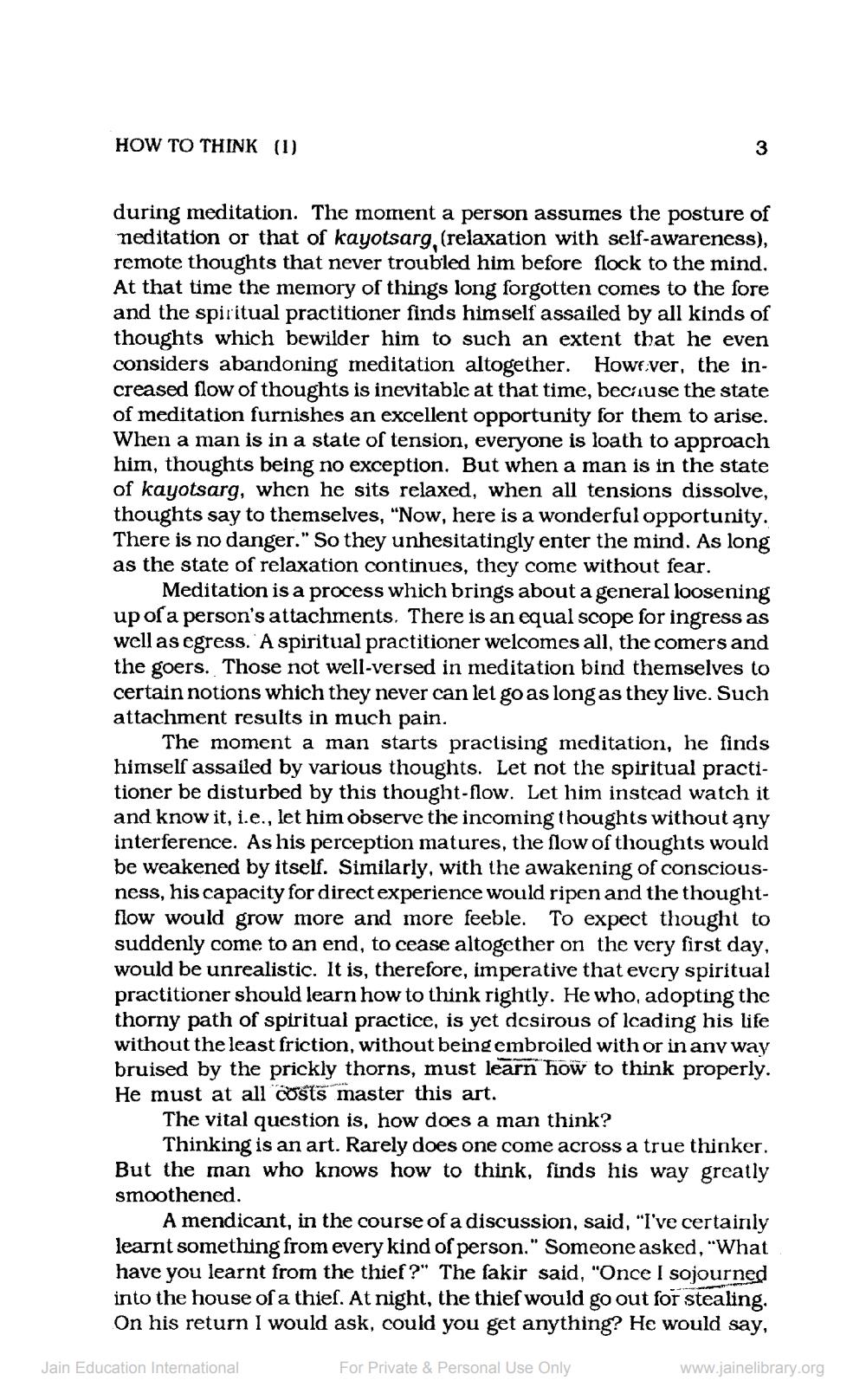________________
HOW TO THINK (1)
3
during meditation. The moment a person assumes the posture of meditation or that of kayotsarg, (relaxation with self-awareness), remote thoughts that never troubled him before flock to the mind. At that time the memory of things long forgotten comes to the fore and the spiritual practitioner finds himself assailed by all kinds of thoughts which bewilder him to such an extent that he even considers abandoning meditation altogether. However, the increased flow of thoughts is inevitable at that time, because the state of meditation furnishes an excellent opportunity for them to arise. When a man is in a state of tension, everyone is loath to approach him, thoughts being no exception. But when a man is in the state of kayotsarg, when he sits relaxed, when all tensions dissolve, thoughts say to themselves, "Now, here is a wonderful opportunity. There is no danger." So they unhesitatingly enter the mind. As long as the state of relaxation continues, they come without fear.
Meditation is a process which brings about a general loosening up of a person's attachments. There is an equal scope for ingress as well as egress. A spiritual practitioner welcomes all, the comers and the goers. Those not well-versed in meditation bind themselves to certain notions which they never can let go as long as they live. Such attachment results in much pain.
The moment a man starts practising meditation, he finds himself assailed by various thoughts. Let not the spiritual practitioner be disturbed by this thought-flow. Let him instead watch it and know it, i.e., let him observe the incoming thoughts without any interference. As his perception matures, the flow of thoughts would be weakened by itself. Similarly, with the awakening of consciousness, his capacity for direct experience would ripen and the thoughtflow would grow more and more feeble. To expect thought to suddenly come to an end, to cease altogether on the very first day, would be unrealistic. It is, therefore, imperative that every spiritual practitioner should learn how to think rightly. He who, adopting the thorny path of spiritual practice, is yet desirous of leading his life without the least friction, without being embroiled with or in any way bruised by the prickly thorns, must learn how to think properly. He must at all costs master this art.
The vital question is, how does a man think?
Thinking is an art. Rarely does one come across a true thinker. But the man who knows how to think, finds his way greatly smoothened.
A mendicant, in the course of a discussion, said, "I've certainly learnt something from every kind of person." Someone asked, "What have you learnt from the thief?" The fakir said, "Once I sojourned into the house of a thief. At night, the thief would go out for stealing. On his return I would ask, could you get anything? He would say,
For Private & Personal Use Only
www.jainelibrary.org
Jain Education International




